In the family Chenopodiaceae, beets are herbaceous biennial roots grown for their edible roots. Plants grow upright with a long main root and rosette-shaped leaves on stems. Leaves are oval, alternately arranged on the stem, and grow between 20 and 40 cm long. Roots are usually red. Plants like beets are usually grown as annuals and harvested after one growing season. In addition to being known as Beetroot, crop beet, or spinach beet, beets originated in the Mediterranean.
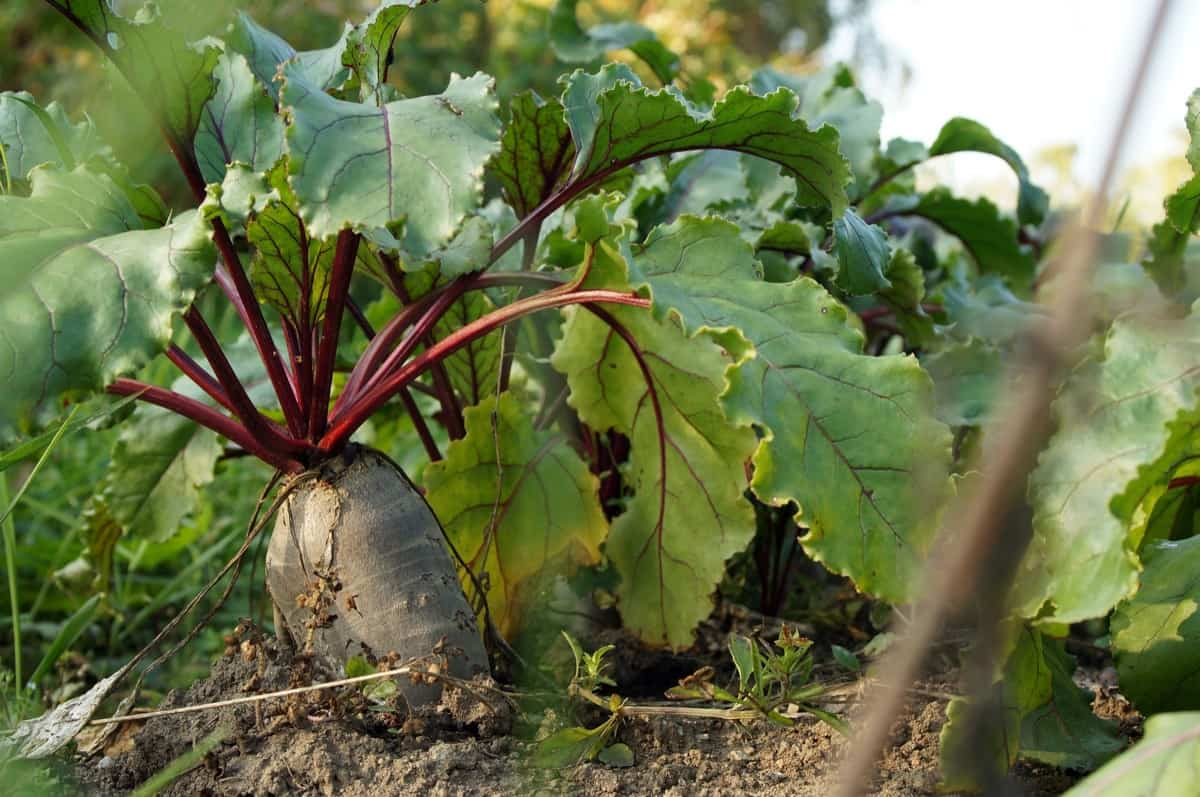
The growing season of beets is long and a cool-season vegetable. The plants grow best in cool climates but can tolerate some heat and freezing. Temperatures between 15.5 and 18.3°C are ideal for their growth. It is best to plant beets in full sun, in loose, well-drained soil with a pH of 6.8. The following are the most common diseases and pests that affect Beetroot.
Pest and disease management in beetroot
Diseases in beetroot crop
Bacterial Leaf Spot
Pseudomonas syringae PV aptata causes bacterial leaf spots in beets. The disease is spread by rain, irrigation, and aphids. Moisture and warmth are conducive to the growth of the bacteria. Younger plants may be more susceptible to this disease, which affects leaf growth. It may also result from excellent, wet conditions at the start of the cropping season.
Growing seedlings may suffer from this disease, which can lead to plant death in severe cases. Seedlings with diseased leaves may be weakened, affecting transplant success. The quality of roots is not directly affected by bacterial leaf spots. Wind and crop tools can also spread it, making it difficult to prevent.
Disease symptoms
- Symptoms of infection include circular spots on the leaves with irregular edges.
- Dark borders and brown interiors will characterize the spots, which look dry.
- Before they turn necrotic and rot, these spots can turn yellow and appear water-soaked.
- The leaves may also run together or fall off altogether if they run together.
Chemical control and management
- Using mulch around your plants to prevent splashing water from landing on their leaves is the first step to preventing this disease.
- After that, sterilize your gloves, spade, and other cropping tools every time you use them. A mixture of 10 percent bleach and 90 percent water should be used.
- You should continue trimming off affected leaves if you notice that the disease has returned. Otherwise, the plants will have to be pulled and thrown away.
- In the case of severe bacterial leaf spots, copper-based products should be considered to prevent the disease’s spread.
- At the first sign of disease, spray sulfur spray fungicides weekly to prevent the spread of the disease. In contrast to conventional fungicides, organic fungicides prevent spores from germinating rather than killing leaf spots.
- Neem oil or Bonide Revitalize, a bio fungicide containing Bacillus amyloliquefaciens, can be sprayed on plants once a week as a preventative measure.
Beet Curly Top
A variety of viruses in the Geminiviridae family causes this disease. The curly top virus, also known as beet curly top virus, affects numerously cultivated and wild plants worldwide. Beet leafhoppers, Circulifer tenellus, spread infectious viral pathogens. Approximately 1/8 of an inch long, this insect is pale green or yellow. A leafhopper jumps or flies from plant to plant-eating tomatoes, potatoes, and beet foliage.
In case you missed it: 18 Steps/Ways to Boost Beetroot Yield: How to Increase Beetroot Production, Size, and Quality
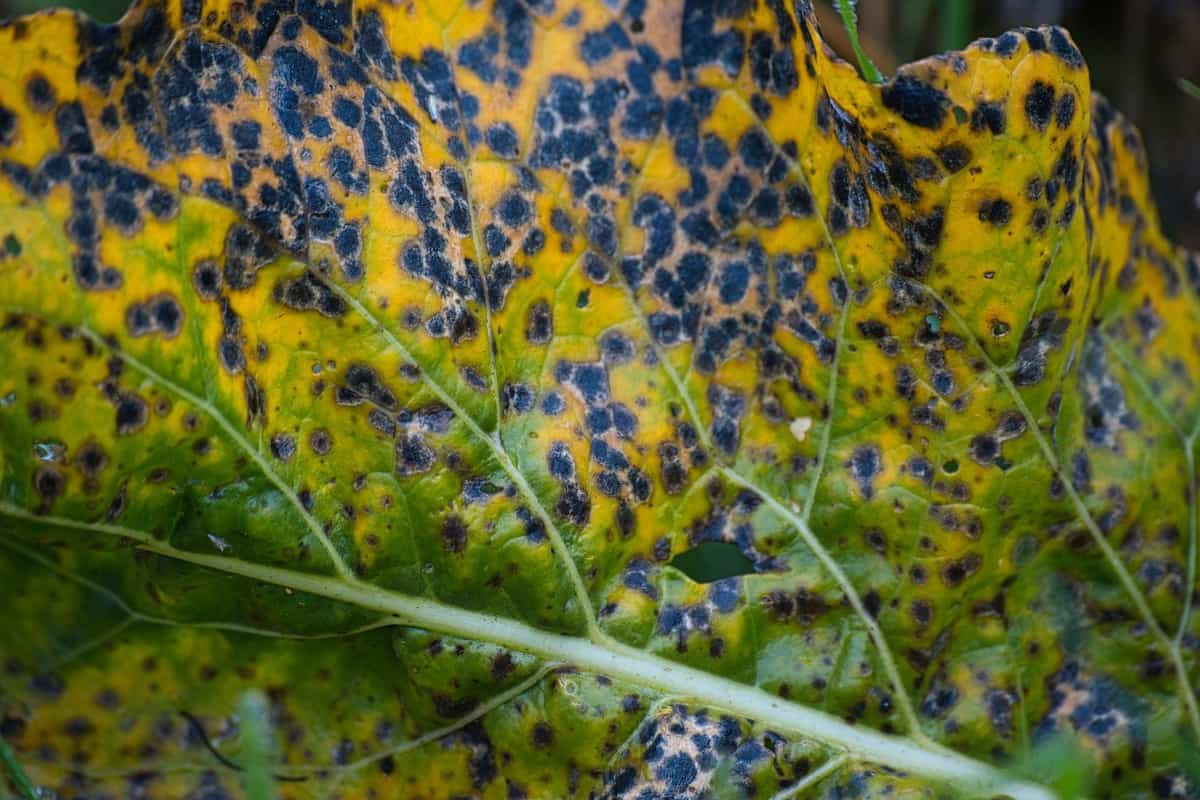
Disease symptoms
- Observe how the leaves curl inward as they crinkle. In addition, they may be stunted, small, and discolored, with purple margins.
- Swollen veins on the bottom half of the leaves characterize infection. Stems become stiff as a result.
- It results in root bending and stunting, making it difficult for the plant to absorb nutrients underground. Foliage turns yellow and stops growing as a result. This chlorosis prevents them from photosynthesizing or absorbing sunlight, ultimately causing them to die.
Chemical control and management
- Protect your plants with floating row covers to prevent bugs from landing on them. Keep weeds out of your crop so they do not have a place to hide.
- Planting should be delayed by one or two weeks. Depending on the area, planting after the leafhopper migration has passed can reduce disease incidence significantly.
- Weeds must be managed. Beet leafhoppers can be controlled with insecticides applied to weeds
- On young and mature foliage, clothianidin, imidacloprid, and thiamethoxam provided long-term reductions in leafhopper survival.
Beet Mosaic Virus
Viruses in the Potyvirus genus cause this virus. Beet mosaic virus, or BtMV as it is scientifically known, is an unfamiliar disease to most farmers. Although it is common in commercially grown beets and spinach, it can also appear in home crops. It causes plant leaves to show mottling and speckling, among other symptoms, like other mosaic viruses.
Disease symptoms
- You will notice light-colored flecks on the youngest leaves if your plant is infected with this disease. Eventually, the green of the leaves between the veins turns pale and yellow
- A few days later, all the leaves eventually turn necrotic, followed by the older leaves that show the same symptoms. A stunted root can occur below ground.
- At the beginning of the infection, pale veins are visible at the tips of leaves; later, symptoms spread toward the bases of leaves. Venous chlorosis may become less noticeable as leaves mature, but eventually, most leaves will be covered with pale blotches.
Chemical control and management
- You can prevent the spread of the disease by pulling and throwing away the affected plants, not your compost.
- The aphids on your plants must also be eliminated once the disease is present. The infection has already been spread as soon as they land on your plant and dig in.
- As a first step, plant trap crops such as nasturtiums, nettles, and asters to attract aphids. Plant repellent plants like marigolds, dill, and catnip between your trap plant and your beets.
- To attract beneficial ladybugs, which love eating aphids, intersperse plants such as cilantro, common geraniums, and cosmos.
- Mix four parts mineral oil with one part dish soap and spray plants with that mixture. It smothers the bugs if they make it onto your plant leaves.
Damping Off
Several species of fungi cause damping, including Aphanomyces cochlioides, Rhizoctonia solani, Phoma betae, and Pythium ultimum. “Damping off” is a soil-borne disease that affects seedlings, causing stems and roots to rot at and beneath the surface of the soil. You will most likely notice damping off when your plant stalks become water-soaked, thin, and mushy, and they fall over at the base.
Disease symptoms
- There is a poor rate of germination. Young seedlings grow poorly, turn yellow, wilt, and topple over. Rotten roots turn black. In compacted soils, the disease can be severe.
- You will often see a thin, brown stem at the base of the plant that has been soaked in water. If you pull up the seedling, you may also see black roots.
- During the early stages of germination, seedlings may not emerge or collapse
- It can be identified by a fuzzy white mold on the soil’s surface.
In case you missed it: Growing Organic Beetroot – Planting, Tips, Ideas
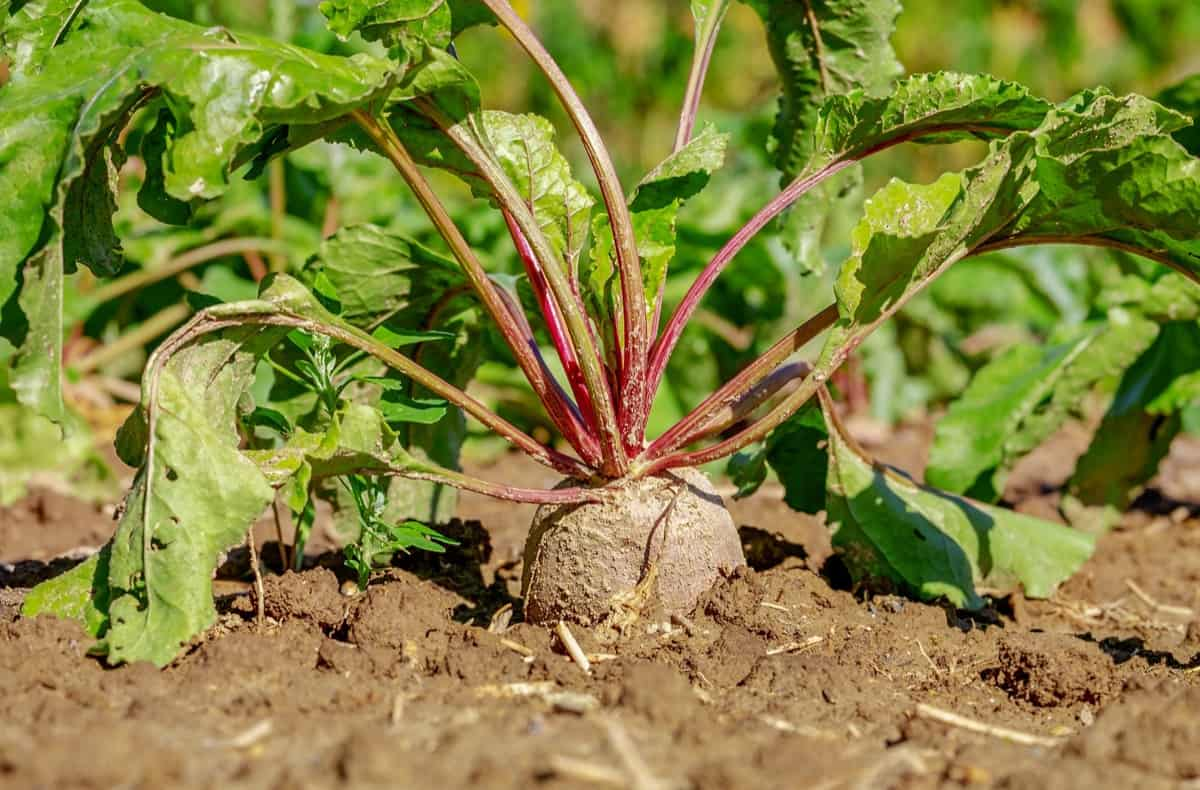
Chemical control and management
- Treat seeds with Trichoderma viride or T harzianum at 4g/kg or Pseudomonas fluorescens at 10g/kg.
- Also, soil can be drenched with 1% Bordeaux mixture or 3 grams of Copper Oxychloride or 1.5 grams of Ridomyl MZ per liter of water.
- Seed treatment with Metalaxyl MZ at 2 grams/kg can control the damping off of seeds.
- Treatment of seeds with 3 grams of Captan or Thiram per kilogram
Downy Mildew
The water mold Peronospora farinosa causes downy mildew. It prefers cool temperatures and high humidity. Powdery mildew on beets can be controlled and treated more quickly if you detect it early on. The disease occurred by a fungus that only grows on beet plants. It appears as small white spots on the undersides of older leaves. During the cooler months, the disease is most prevalent.
Disease symptoms
- The symptoms appear as irregular greasy greyish areas on the leaves. A white powdery growth notices on the lower surface of affected leaves under moist conditions. A brown color develops later on in the infected parts
- In young leaves, the edges turn downward. On the underside of the leaves, gray fungus growth is visible.
- The affected leaf dries quickly and fades. Infected plants produce stunted and distorted flower shoots.
- A witch’s broom-like appearance can be caused by excessive leaf development throughout the inflorescence.
- Seeds carry the fungus and survive on crop residues in the soil.
Chemical control and management
- As directed on the package, spray plant foliage once daily with a diluted mixture. Roots underground are not affected, but leaves can be damaged.
- Field sanitation, crop rotation, and resistant cultivars are recommended as preventive measures.
- Emerging seedlings are protected from disease attack with Thiram (2.5-3 grams/kg of seed).
Insects and their management in beetroot crop
Aphids
Beet plants are the favorite food of dozens of species of aphids from Myzus and Aphis. Aphids are commonly found on green peaches, melons, potatoes, cowpeas, and beans. Aphids range in color from black to nearly white, with some being tan, orange, green, or red. They are all tiny and pear-shaped. Depending on the species, some have wings, while others do not.
Damage symptoms
- They leave a sticky residue called honeydew after sucking on plant sap, which also attracts ants and fungi.
- Sooty mold develops from honeydew excrement
- Leaves can curl and turn yellow if there is a large infestation. As well as stunting leaf and root growth, they can damage the soil.
Biological control
- It would help if you encouraged beneficial insects to visit your crops, such as parasitic wasps, ladybugs, lacewings, soldier beetles, and syrphid flies.
- Using flour or canola oil on the stems and undersides of leaves can help.
Chemical control and management
- As your first line of attack, blast the plant with strong water from the hose. You can sometimes knock them loose, and they won’t return.
- Seeds should be treated with imidacloprid 70% WS at a rate of 12 grams per kilogram
- At a rate of 10 kg/ha, apply phorate 10 % G
Beet Leafhoppers
Beet leafhoppers are tiny, pale green or tan insects with dark, blotchy markings. With translucent wings, it measures about a tenth of an inch long. If you have these in your crop, the adults feed on the leaves, but that’s not a major concern.
Damage symptoms
- When you have these in your crop, you won’t need to worry about the adults feeding on the leaves.
- As leafhoppers feed by sucking sap from plants, white to yellow stippling appears on the leaves, browning occurs on the lower leaves, and yellowing occurs on the upper leaves. Beet leafhoppers transmit the curly top virus.
Biological control
- Beneficial insects like predatory ladybirds, lacewings, soldier beetles, and parasitoid wasps can control aphids, mites, and leafhoppers.
- Light traps can be set up to attract and kill moths. Install at least five light traps per hectare.
In case you missed it: Beetroot Cultivation Income, Yield, Profit, Project Report
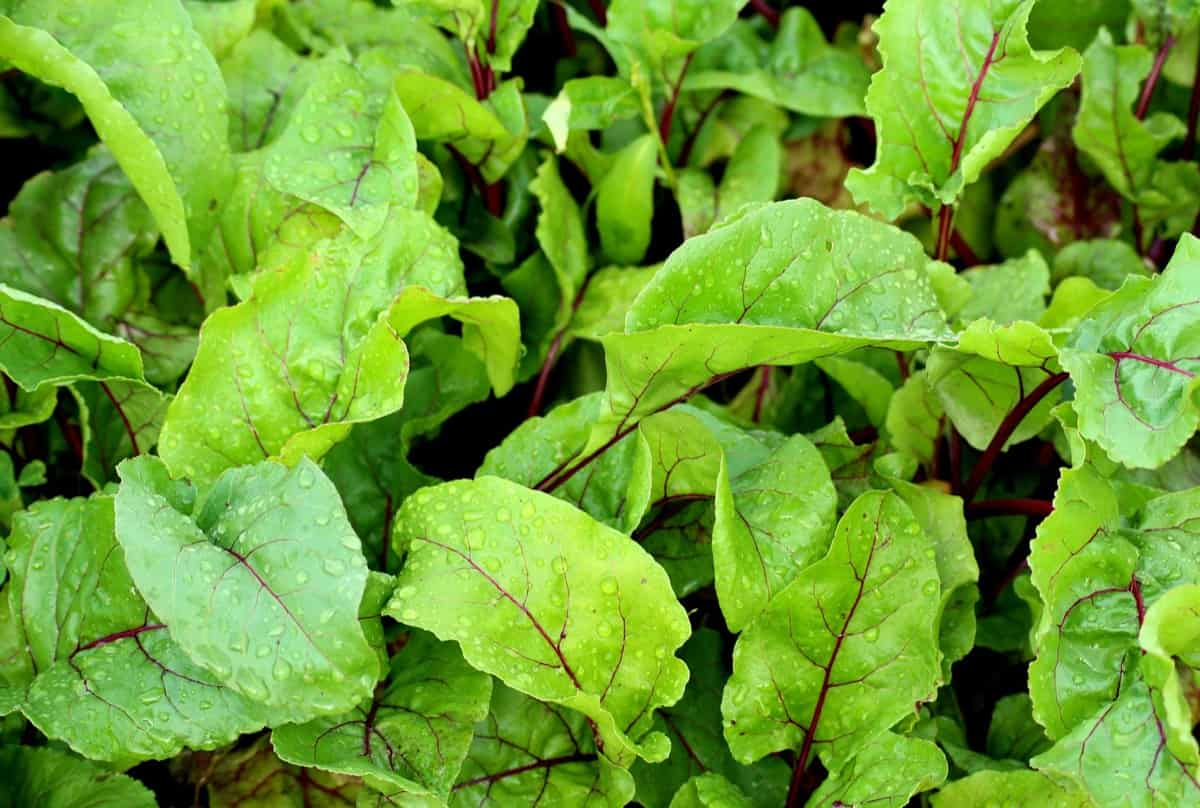
Chemical control and management
- Remove weeds or debris from your crop at the end of the season and in the spring before planting. During the growing season, cover your beets with floating row covers.
- Spray any one of the following insecticides,
- Phosphamidon 40 SL 50 ml
- Phosalone 35 EC 120 ml
Beet Webworms
As larvae or pupae, webworms overwinter and emerge in early spring. They are small, buff to smoky brown moths active at night. Alfalfa webworm eggs are laid in overlapping groups, while beet webworm eggs are laid end to end. A mature beet webworm larva is about 1.5 inches long and olive green, with a dark band running along the back and lighter stripes on either side. There is a broad, light-colored stripe down the back of the webworm and a darker stripe parallel to the light stripe.
Damage symptoms
- The worms chew through leaves and can quickly skeletonize a plant.
- In addition to curling or binding leaves, they use silky threads to make a cozy hideaway.
- Despite this, the worms do not create a nest for pupating. Instead, it is underground where they form cocoons that they do this.
- It is rare for your crops to suffer root damage, but if a severe infestation completely defoliates your plants, you may lose them.
Biological control
- Several parasites and predators have been reported on webworms. These agents may not be able to regulate webworm populations, however.
- An egg-injecting parasitoid wasp is the main biological control agent for beet webworms.
Chemical control and management
- Use neem, derris, pyrethrum, or chili. If these are used, add soap to help the chemical reach the caterpillars within the rolled leaves.
- You may also use commercial biopesticides, such as spinosad (the product is called Success) or Bt – Bacillus thuringiensis var kurstaki.
Cutworms
Flying night moths in the Noctuidae family lay cutworm larvae. Beetroots are chewed through at the soil level, killing the plants. Colors range from light gray to dark brown or bright green, and their skin appears greasy. These caterpillars are about an inch or two long and have no hair, unlike some other caterpillars. When disturbed, they curl up into a protective “C” shape.
Damage symptoms
- Since they only emerge at night, they can be difficult to spot. You often find your beet foliage dead when you go outside to check your crop in the morning.
- A few cutworms also feed on young leaves and cut down stems. Farmers should keep them away from plants because they can instantly kill them.
Biological control
- Birds, predatory beetles, nematodes, and tachinid flies are important natural enemies of cutworms.
- Cutworms are very susceptible to biological control agents. Scelionid and braconid wasps, for instance, are egg parasitoids, while grasshoppers are pest predators. Fungi and polyhedrosis viruses attack this insect pest.
In case you missed it: Growing Beetroot In Containers Information

Chemical control and management
- The use of insecticides, such as pyrethroids, may be necessary when larval populations are extremely high.
- Since pyrethroids can also cause secondary pests, spot spraying is recommended only at high population densities.
Leafminers
The larvae of Liriomyza and Pegomya flies are called leafminers. The little pests chew tunnels through the leaves of beet plants in winding, maze-like patterns. Plants grown in greenhouses are more susceptible to leafminers than in fields. Beet, spinach, and chard, as well as lamb’s quarter, are hosts of the spinach leafminer. Approximately 14 inches long, with black bristles, adult flies are gray. They look like pale green maggots when they are larvae.
Damage symptoms
- As a result of leafminer activity, blisters, blotchy mines, and twisting tunnels may appear.
- The feces of larvae can contaminate leafy tissue intended for consumption. In vegetable crops not marketed for foliage, stunting can also occur due to a reduction in photosynthetic leaf area.
- Initially, leafminers produce serpentine mines, but later they produce large, undifferentiated blotches. While completing their growth, vegetable leafminer larvae may feed on several leaves.
Biological control
- Lacewings prey on various soft-bodied insects, including aphids, mealybugs, caterpillars, and scale crawlers. Leaf miner larvae will be removed and eaten by them. Removing the larva won’t heal the damage done by leaf miner larva on leaves but will limit future damage.
- Various parasitic wasps parasitize leafminers, but they all lay eggs in some leafminers. As soon as the eggs hatch, the larvae eat the leaf miner from the inside out. Leaf miner larvae chew out the dead ones after they have finished growing.
Chemical control and management
- It is possible to keep flies from landing on your plants and laying eggs using floating row covers, but you must get them on correctly when planting your seeds or seedlings and keep them there until harvest time.
- You can also keep them under control by applying neem oil weekly. Make sure you follow the manufacturer’s instructions regarding dosage and mixing.
- There has been resistance to organophosphate insecticides among some leafminer populations. Insecticides must be applied early in the insect’s life cycle.
In case you missed it: How to Control Pests and Diseases in Groundnut: Causes, Symptoms, Chemical, and Biological Management
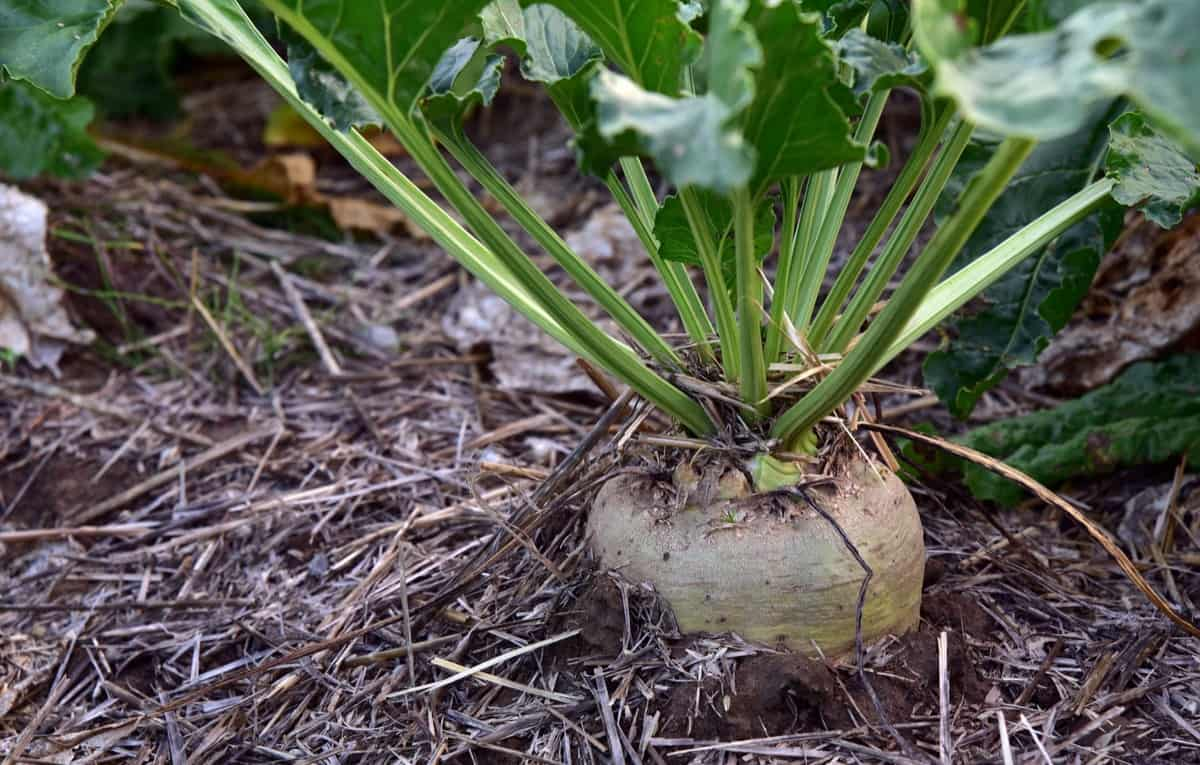
Conclusion
These pests and diseases cause severe damage to crop quality and yield. So, keep a close eye on symptoms and take control action and preventive measures at the initial stages to reduce the losses.
- Types of Pesticides Used in Agriculture: A Beginner’s Guide
- Economical Aquaculture: A Guide to Low-Budget Fish Farming
- 15 Common Planting Errors That Can Doom Your Fruit Trees
- How to Make Houseplants Bushy: Effective Tips and Ideas
- Innovative Strategies for Boosting Coconut Pollination and Yield
- Pollination Strategies for Maximum Pumpkin Yield
- The Complete Guide to Chicken Fattening: Strategies for Maximum Growth
- Natural Solutions for Tulip Problems: 100% Effective Remedies for Leaf and Bulb-Related Issues
- Revolutionizing Citrus Preservation: Towards a Healthier, Greener Future
- Natural Solutions for Peony Leaf and Flower Problems: 100% Effective Remedies
- Maximizing Profits with Avocado Contract Farming in India: A Comprehensive Guide
- Natural Solutions for Hydrangea Problems: 100% Effective Remedies for Leaf and Flowers
- The Ultimate Guide to Choosing the Perfect Foliage Friend: Bringing Life Indoors
- From Sunlight to Sustainability: 15 Ways to Use Solar Technology in Agriculture
- The Ultimate Guide to Dong Tao Chicken: Exploring from History to Raising
- The Eco-Friendly Makeover: How to Convert Your Unused Swimming Pool into a Fish Pond
- Mastering the Art of Delaware Chicken Farming: Essentials for Healthy Backyard Flocks
- 20 Best Homemade Fertilizers for Money Plant: DIY Recipes and Application Methods
- How to Craft a Comprehensive Free-Range Chicken Farming Business Plan
- Brighten Your Flock: Raising Easter Egger Chickens for Beauty and Bounty
- How to Optimize Your Poultry Egg Farm Business Plan with These Strategies
- Subsidy for Spirulina Cultivation: How Indian Government Schemes Encouraging Spirulina Farmers
- Ultimate Guide to Raising Dominique Chickens: Breeding, Feeding, Egg-Production, and Care
- Mastering the Art of Raising Jersey Giant Chickens: Care, Feeding, and More
- Ultimate Guide to Raising Legbar Chickens: Breeding, Farming Practices, Diet, Egg-Production
- How to Raise Welsummer Chickens: A Comprehensive Guide for Beginners
- How to Protect Indoor Plants in Winter: A Comprehensive Guide
- Ultimate Guide to Grow Bag Gardening: Tips, Tricks, and Planting Ideas for Urban Gardeners
- Guide to Lotus Cultivation: How to Propagate, Plant, Grow, Care, Cost, and Profit
- Agriculture Drone Subsidy Scheme: Government Kisan Subsidy, License, and How to Apply Online
- Ultimate Guide to Raising Araucana Chickens: Breed Profile, Farming Economics, Diet, and Care
- Bringing Hydroponics to Classroom: Importance, Benefits of Learning for School Students
- Ultimate Guide to Raising Polish Chickens: Breed Profile, Farming Economics, Diet, and Care
- Ultimate Guide to Raising Australorp Chickens: Profile, Farming Economics, Egg Production, Diet, and Care
- Silkie Chicken Farming: Raising Practices, Varieties, Egg Production, Diet, and Care
- Sussex Chicken Farming: Raising Practices, Varieties, Egg Production, Diet and Care